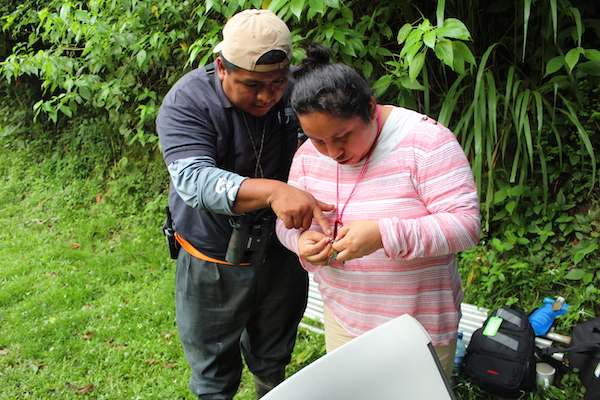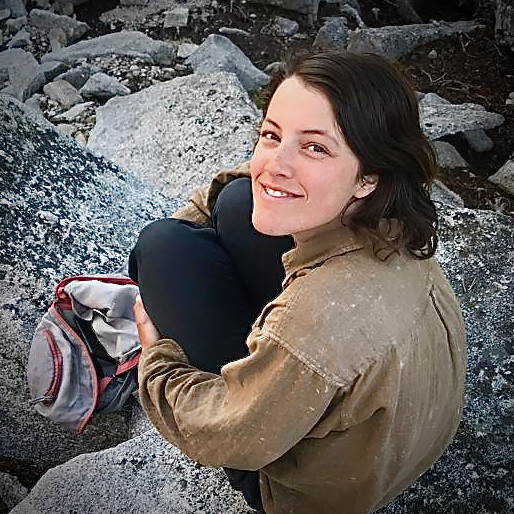The MoSI bird monitoring program is a collaborative bird monitoring effort that wouldn't exist without the network of fantastic partners across the Neotropics. Partners like Abidas Ash in Belize, who do the hard work of banding and data collection. This is Abidas's fourth season with MoSI and last year she co-authored a paper documenting evidence that White-eyed Vireos may temporarily suspend their pre-basic molt while they migrate.
We also share some of the photos Abidas has sent us of the fabulous birds she and her team have caught at their banding stations. While the primary goal of the MoSI program is to monitor neotropical migrant birds, many resident neotropical birds are caught and banded as well. These stunners are a real treat for those of us in the temperate zone. Enjoy and day dream about birding in Belize!
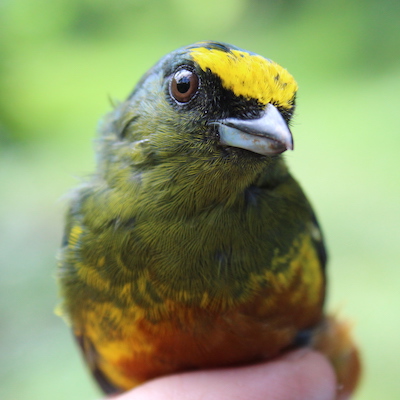
Olive-backed Euphonia; photo courtesy of Abidas Ash.
How did you first get interested in birds?
Growing up on a farm I learned some of the local names of most of the common birds around the farm. But I didn’t venture far into birds until 2012 when I was given the opportunity to do an internship at the Belize Foundation for Research and Environmental Education through a collaboration with the University of Belize (UB) and the University of North Carolina, Wilmington. We were taught bird monitoring techniques such as point counts and bird banding. Through this training I was able to get hands-on experience and I enjoyed birding. Since then I have been birding, but mostly bird banding.
IBP: When did you first start participating in the MoSI program?
I started working in the MoSI program when I joined the University of Belize Environmental Research Institute in November 2016.
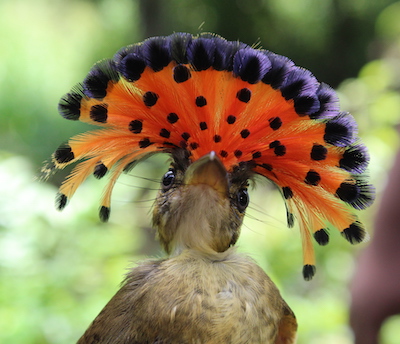
Royal Flycatcher, photo by Abidas Ash.
What do you do in your job at the University of Belize Environmental Research Institute?
Apart from doing the MoSI field effort from November to March, I also do bird banding training and assist in teaching a course called Field Methods under the Bachelor program of the Natural Resource Management Program at UB.
What is your favorite resident Belizean bird?
This is a very hard question since I don’t really have a favorite because they are all so colorful. The highlights for me are Royal Flycatcher, Lesson’s Motmot, Gray-throated Chat, Green Honeycreeper, Red-legged Honeycreeper.
What it your favorite bird to band?
All birds caught in the net are amazing even the common ones such as Wood Thrush, Gray Catbird, and Manakin Species.
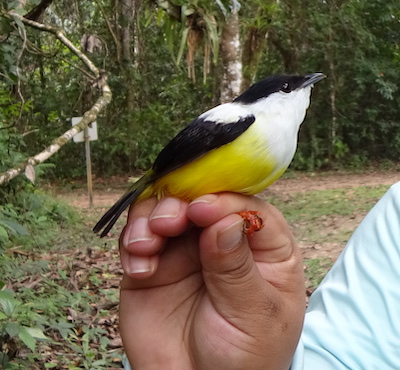
A White-collared Manakin; photo courtesy of Abidas Ash.
What do you like most about bird banding?
Apart from capturing birds for data collection, I like that I can use it as an outreach education tool for foreigners and Belizeans. I love the joy that it has brought the visitors that have visited the sites. I also love to see that more Belizean birding tour guides are interested and are coming out to visit us at the different sites. It also allows them to learn more about birds than you do through bird watching.
What do you like to do when you're not working with birds?
Sleep, spend time with family and travel but I still go birding. I believe birding is my job and hobby.
What is the coolest bird you ever caught in your mist net?
There are a few such as Little Tinamou, White-throated Thrush, Yellow-throated Warbler, Band-tailed Barbthroat and Purple Crowned Fairy.
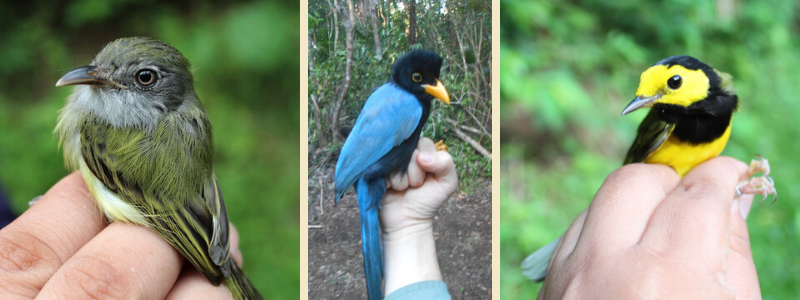
Northern Bentbill, Yucatan Jay and Hooded Warbler; photos courtesy of Abidas Ash.


